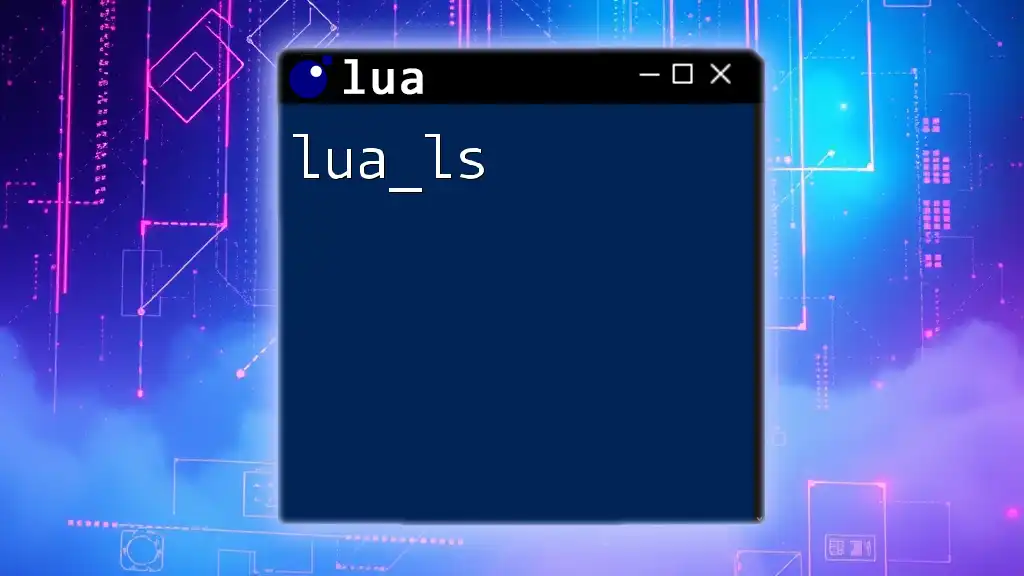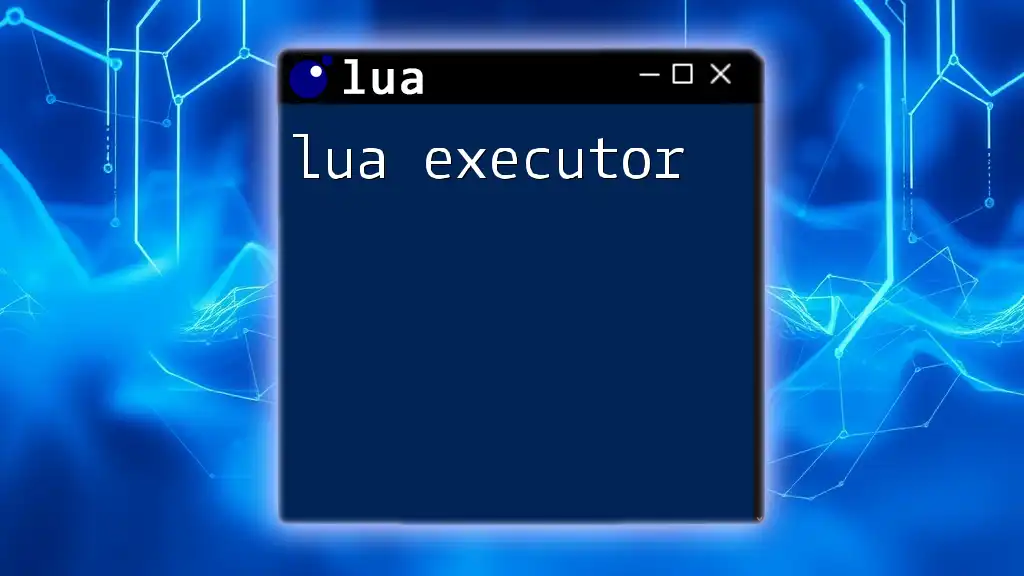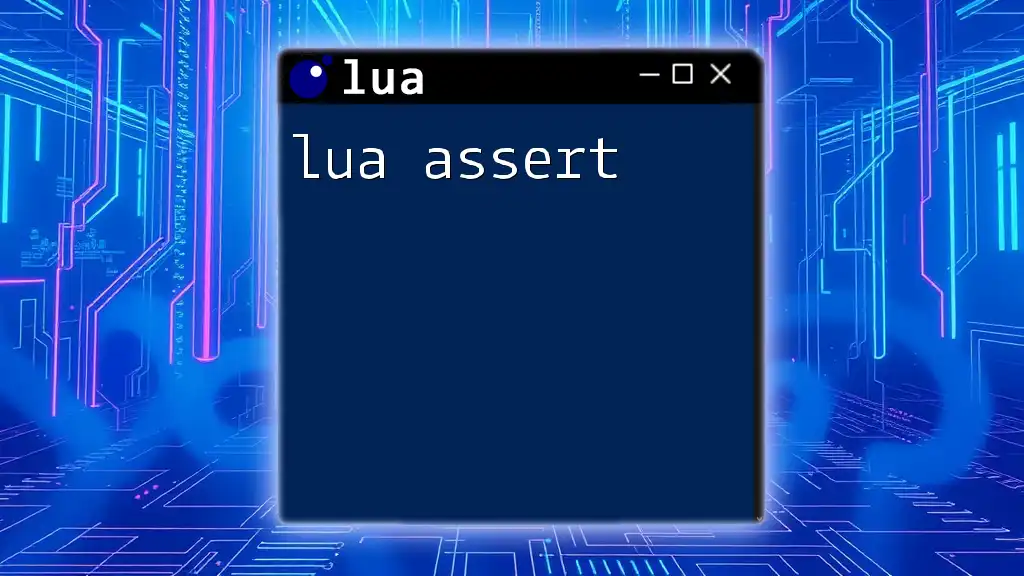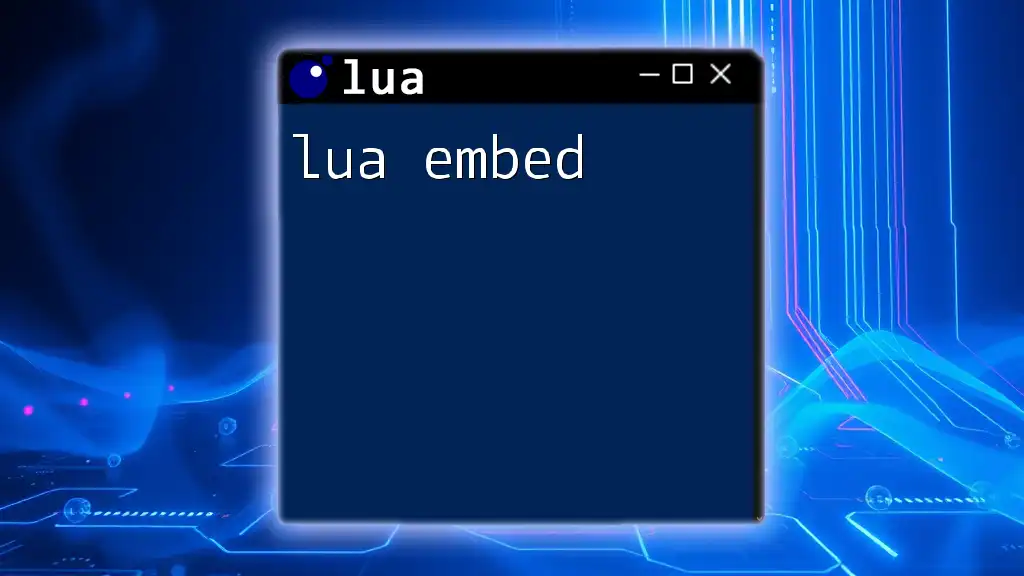In Lua, the `else` statement is used to specify an alternative block of code that will execute if the preceding `if` condition evaluates to false.
local number = 10
if number > 15 then
print("Number is greater than 15")
else
print("Number is 15 or less")
end
Understanding the Basics of `if` Statements
What are Conditional Statements?
Conditional statements are fundamental building blocks in programming that allow you to control the flow of execution based on specific conditions. Using these statements effectively enables your code to make decisions, executing different branches of code depending on whether a given condition evaluates to true or false.
Why Learn `if then else` in Lua?
The `if then else` structure in Lua is essential for making decisions in your code. Understanding how to use it not only helps you manage the logic of your programs but also enables you to implement complex algorithms and functionalities efficiently.

The Structure of an `if` Statement in Lua
To use an `if` statement in Lua, you begin with the keyword if, followed by a condition that evaluates to either true or false, and then the then keyword. If the condition is true, the code that follows within the block will execute.
Here is the basic syntax:
if condition then
-- code to execute if condition is true
end
For example:
local age = 18
if age >= 18 then
print("Adult")
end
In this case, the output will be "Adult" because the condition holds true. Understanding this structure is vital as it sets the foundation for introducing the `else` statement.

Introducing `else` in Lua
What is `else` in Lua?
The `else` statement is a powerful feature in Lua's conditional structure that allows you to specify an alternative block of code to be executed when the `if` condition evaluates to false. This provides a fallback option if all other conditions are not met.
The general syntax for using `else` is as follows:
if condition then
-- code to execute if condition is true
else
-- code to execute if condition is false
end
Here’s an example to illustrate how `else` works:
local temperature = 15
if temperature > 20 then
print("It's warm outside.")
else
print("It's cool outside.")
end
In this case, since the temperature is not greater than 20, the output will be "It's cool outside." This showcases how `else` allows for graceful handling of scenarios where conditions aren't met.

Expanding with `elseif`: The Power of Multiple Conditions
Understanding `elseif` in Lua
The `elseif` statement allows you to chain multiple conditions within an `if` structure. This is especially useful when you have more than two conditions to evaluate. Using `elseif` enhances the readability of your code and avoids deeply nested structures.
This is how you would structure multiple conditions using `if then else if`:
if condition1 then
-- code for condition1
elseif condition2 then
-- code for condition2
else
-- code if none of the above conditions are true
end
For example, consider a scenario where you want to categorize a score:
local score = 85
if score >= 90 then
print("A")
elseif score >= 80 then
print("B")
elseif score >= 70 then
print("C")
else
print("F")
end
In this example, the output will be "B" since the score is 85. Here, each condition is evaluated in sequence, and only the block corresponding to the true condition executes. This structure prevents unnecessary checks after a true condition is found.

Practical Examples Using `else`, `elseif`, and `if`
Example 1: Grading System
Let’s enhance our understanding with a practical example of a grading system. Here, we use `if`, `elseif`, and `else` to determine the letter grade based on a numerical score:
local score = 73
if score >= 90 then
print("A")
elseif score >= 80 then
print("B")
elseif score >= 70 then
print("C")
else
print("F")
end
Analysis: As the score is 73, the program evaluates the conditions in order until it finds the one that is true (`elseif score >= 70`), returning "C". This demonstrates how `elseif` helps create a clear path for condition checking.
Example 2: User Input Validation
Another common use of `if`, `elseif`, and `else` is in user input validation. Below is an example where we manage different types of user commands:
local user_input = "hello"
if user_input == "hello" then
print("Welcome!")
elseif user_input == "bye" then
print("Goodbye!")
else
print("Unknown command.")
end
Discussion: In this case, the user input matches the first condition, so "Welcome!" is printed. This showcases how the `else` statement acts as a catch-all for inputs that do not match any preceding conditions.

Common Errors with `if then else` and How to Avoid Them
Syntax Pitfalls
When writing `if else` statements in Lua, it is easy to make simple mistakes, such as forgetting the then keyword or incorrectly nesting conditions. Such errors can lead to syntax errors or unexpected behavior in your program.
Best Practices for Using `else`, `elseif`, and `if`
To ensure your code remains clean and understandable, always follow best practices:
- Use clear and descriptive condition names.
- Keep indentation consistent for readability.
- Limit nested conditions; leverage `elseif` rather than multiple `if` statements.

Conclusion
In summary, the `else` statement in Lua, along with its companions `if` and `elseif`, provides a robust mechanism for implementing decision-making in your programs. These constructs are fundamental to any form of programming logic, enabling both simple and complex decision flows.
I encourage you to practice creating different scenarios utilizing these concepts to strengthen your skill set in Lua programming. Mastering conditional statements like `if`, `else`, and `elseif` will serve as a solid foundation as you delve further into the world of coding.

Additional Resources
To continue your learning journey, explore further reading materials on Lua programming. Online communities, forums, and dedicated Lua programming books can offer valuable insights and examples that extend beyond conditional statements. Additionally, consider looking at various projects that incorporate these statements to see how they function in real-world applications, solidifying your understanding even more.

















